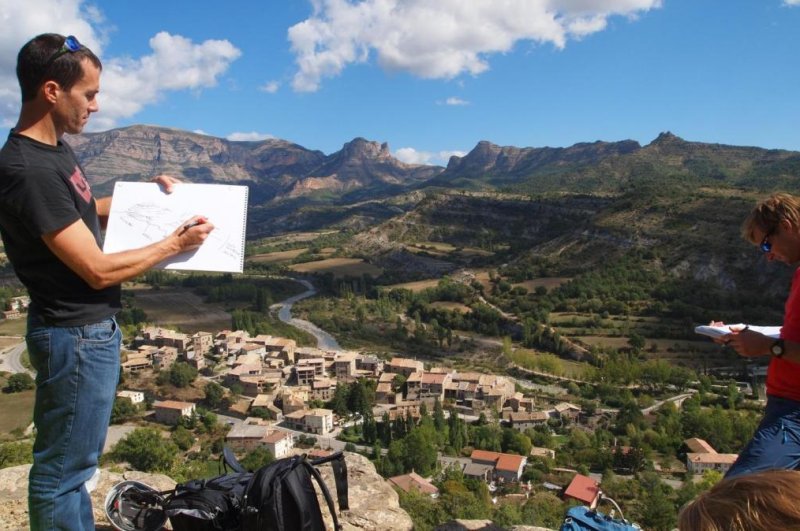Researchers traced the impacts of ancient climate change on the dynamics of the hydrological cycle in the Spanish Pyrenees. Photo by UNIGE
Sept. 6 (UPI) -- Human-caused global warming is happening at an unprecedented rate, but a few instances of historic climate change provide insights into how rising temperature might impact Earth's systems.
New analysis of one of those instances, the so-called Palaeocene-Eocene Thermal Maximum, suggests rapid global temperature increases can transform hydrologic cycles.
"Our study proves that the risks associated with global warming may be far greater than we generally think," Sebastien Castelltort, climate scientist at the University of Geneva, said in a news release.
Beginning 56 million years ago, during the Palaeocene-Eocene Thermal Maximum -- a period between the Palaeocene and Eocene epochs, lasting 10,000 to 20,000 years -- temperatures rose between 5 and 8 degrees Celsius.
Using the analysis of ancient sediment cores, scientists analyzed the effects of this dramatic rise in temperature on hydrologic cycles.
Previous studies have charted the rise in temperature during Palaeocene-Eocene Thermal Maximum, or PETM. Castelltort and his colleagues analyzed evidence of shifting river dynamics in the Spanish Pyrenees during the same time period.
The analysis of pebbles in ancient sediment cores allowed researchers to estimate the flow velocity and discharge in the river system. At the beginning the of the PETM, river channels deposited fertile alluvium in the floodplain at the foothills of the Pyrenees. The deposits encouraged the growth of rich vegetation.
As temperature rose during the PETM, the system's dynamics shifted dramatically. Rising temperatures increased the severity and frequency of flooding by a factor of 14. The sudden change caused fertile alluvium to be carried directly to the ocean, bypassing the floodplain.
As a result of the change in sediment deposition patterns, vegetation disappeared from the Pyrenees foothills. The region was transformed into an arid expanse of gravel.
Scientists suggest their findings -- published this week in the journal Scientific Reports -- offer a reminder that researchers still understand very little about the repercussions and consequences of dramatic changes to hydrologic cycles.
"We face effects that we do not understand, which can perhaps be explained by local factors, but also by global factors that are not yet incorporated into current climate models," Castelltort said.















